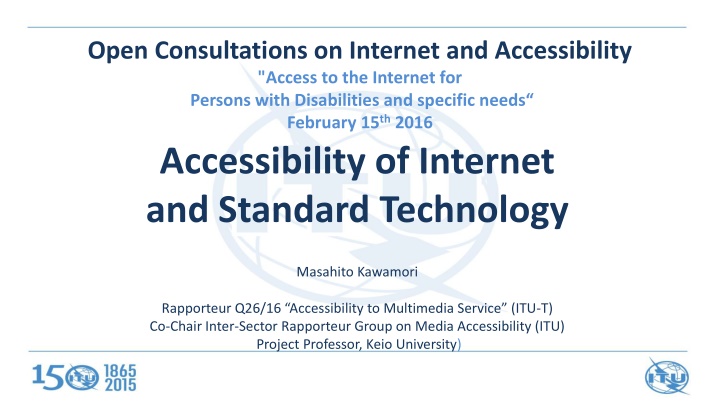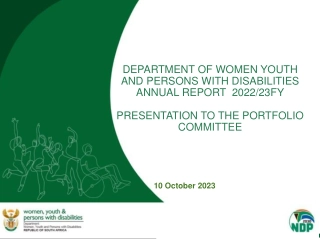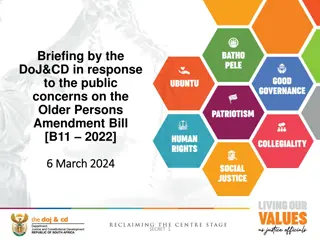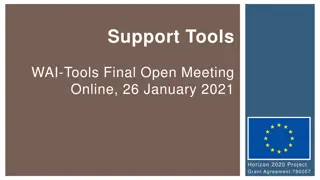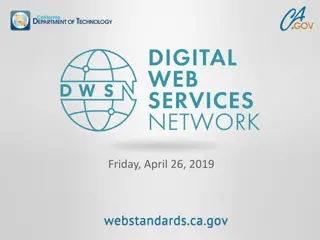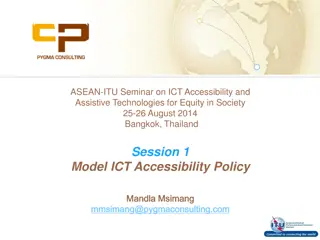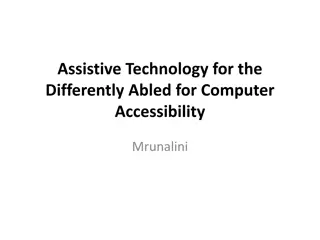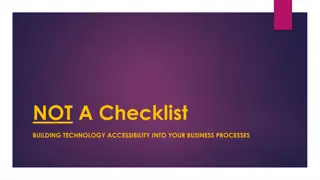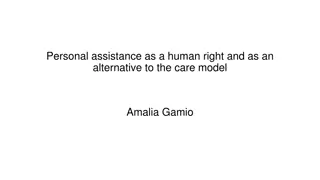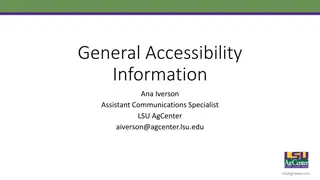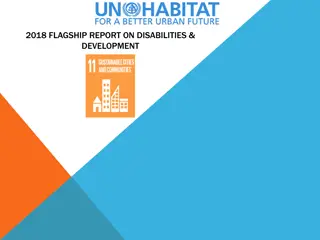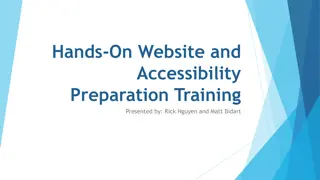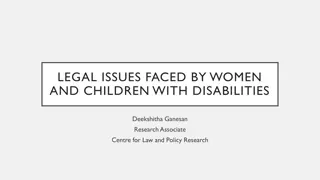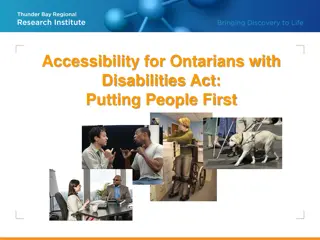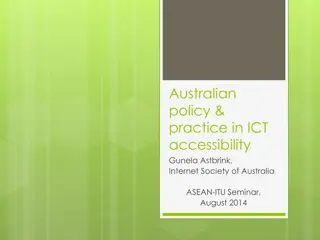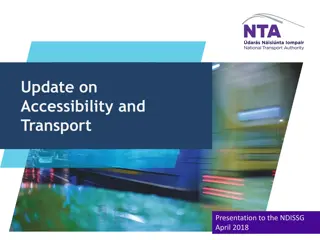Enhancing Internet Accessibility for Persons with Disabilities
Challenges faced by individuals with disabilities in accessing the internet, keys to making the internet more accessible, examples of standard technologies for accessibility, and gaps in addressing these challenges. Discover the role of governments in promoting accessible technologies for all.
Download Presentation

Please find below an Image/Link to download the presentation.
The content on the website is provided AS IS for your information and personal use only. It may not be sold, licensed, or shared on other websites without obtaining consent from the author.If you encounter any issues during the download, it is possible that the publisher has removed the file from their server.
You are allowed to download the files provided on this website for personal or commercial use, subject to the condition that they are used lawfully. All files are the property of their respective owners.
The content on the website is provided AS IS for your information and personal use only. It may not be sold, licensed, or shared on other websites without obtaining consent from the author.
E N D
Presentation Transcript
Open Consultations on Internet and Accessibility "Access to the Internet for Persons with Disabilities and specific needs February 15th2016 Accessibility of Internet and Standard Technology Masahito Kawamori Rapporteur Q26/16 Accessibility to Multimedia Service (ITU-T) Co-Chair Inter-Sector Rapporteur Group on Media Accessibility (ITU) Project Professor, Keio University)
Challenges for using Internet Hesitation to use the Internet due to: Lack of skill Concerns about security Quality of information (Perceived) Complexity of the Internet Information seeking (on Internet) demands many cognitive skills Reasoning, working memory, perceptual speed Problematic for some persons with disabilities (PWD) and specific needs (PWSN) 2
Keys for Accessible Internet For Internet to be (more) accessible to the PWD and PWSN, the following need to be considered: User Interface -- Ease of Use and Simplicity (incl. presentation mode, e.g. for cognitive disability) Security Trust and Credibility -Selected Information with assured Quality Usability- no stress associated with daily use and little training for use and for maintenance Accessibility vs. Vulnerability: The more accessible, the more vulnerable 3
Example of Standard Technology for Accessibility to Internet ITU-T IPTV Internet-Protocol TV Information and service Interface for multimedia content and information Ease of Use: (e.g.,) Remote controller Interactive: just like Web, but light enough for TV Secure: authentication, content protection Quality: managed service, selected and credible information Trustworthy: Standardized, Implemented, Deployed Multi-device: TV set as well as tablet and smartphones 4
Gaps in addressing these challenges Lack of consensus on standards (of services) Higher cost and more dangers of traps Lack of basic, minimum, robust and mature technologies (or profiles) that can be applied to a large segment of the target (PWD and PWSN) ever-changing advanced features are not needed (e.g., character-based UI for the blind vs. Flashy Graphics) Lack of Sense of Urgency -> Accessibility for Now , with what we have now Fragmented market -> confusing to the user
The role of governments Promotion of global standard technologies Procurement Policies Support on Deployment Education, training Interoperable Profiles with regional flavor, with degrees of options
Thank you Contact: masahito.kawamori@ties.itu.int
